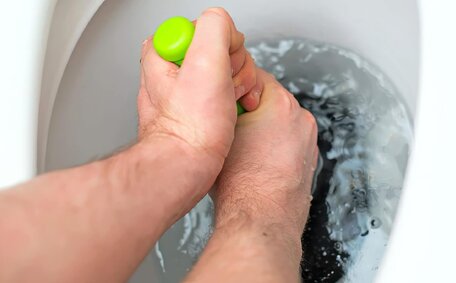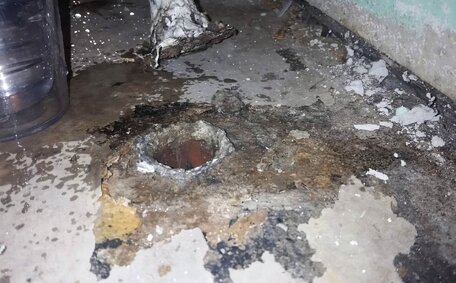Introduction to Cleaning Hot Water Systems
Keeping your hot water system properly maintained is crucial for efficiency and longevity. Whether you have an electric water heater, gas, or tankless system, periodically cleaning your unit can help remove sediment buildup and prevent issues down the road.
Dural Plumbing, servicing Dural and the greater Sydney region, offers expert assistance in safely maintaining clean electric hot water systems. This guide outlines best practices for cleaning electric, gas, and tankless water heaters, so your system operates efficiently.
A full system flush is a key aspect of routine maintenance, essential for the continued proper functioning of electric water heaters. Continue reading to learn the steps to flush and thoroughly clean your hot water system.
Why It’s Important to Clean and Flush Hot Water Systems
Regularly flushing the hot water system in your home can also be vital to enhance your water heater’s maintenance, energy efficiency, and longevity, helping you clean your hot effectively. Over time, water heater sediment from minerals and deposits from the water supply can accumulate inside the tank or pipes. Sediment insulates the heating elements, making your system work harder and use more energy, while reducing hot water efficiency.
Flushing the water heater removes sediment, thereby improving its operation and efficiency. It also allows the system to evenly heat water again, preventing cold spots and ensuring a reliable and continuous flow of hot water whenever you need it.
Sediment buildup can lead to serious issues such as corrosion, scale accumulation, and temperature pressure component failures, including the heating elements or your thermostat. By periodically addressing what your heater needs through flushing, you remove these deposits and minimise the risk of premature failures or replacements.
While complex repairs can be costly, cleaning your water heater through a routine flush is an affordable preventative strategy. Investing an hour in your hot water system’s maintenance can significantly extend its lifespan. Avoid major problems by maintaining your hot water system’s efficiency with regular draining and flushing.
How Often Should You Clean a Hot Water System?
Annual flushing is recommended for gas water heaters to manage sediment buildup.
The flushing frequency for electric systems is typically once a year, depending on local water quality. In hard water areas, more minerals dissolve into the water, resulting in heavier limescale deposits inside your hot water system. In areas with exceptionally hard water, consider flushing every 6 months to prevent sediment issues.
Dural Plumbing assesses your water quality and the condition of the sacrificial anode to recommend an ideal flushing frequency. Our goal is a maintenance schedule that prevents sediment buildup without inconvenience. As a general guideline for most storage tank systems:
- Electric and gas tank systems should be flushed once per year.
- Tankless heaters may need flushing every 6-12 months in hard water areas.
- Solar hot water systems require an annual checkup but may not need a full flush if water quality is good.
When flushing, it’s advisable to replace the anode rod in electric tank heaters every 3-5 years. For your tankless water heater, descaling the heat exchanger may be necessary every 2-3 years if you have hard water.
Contact Dural Plumbing anytime for a water heater flush to evaluate and maintain your hot water system and tailor a maintenance plan for optimal performance and longevity.
What You Will Need to Clean and Flush a Hot Water Tank
With the right tools, cleaning your water heater can be a straightforward DIY task. Here’s what you’ll need:
- Garden hose drain - At least 15 metres long
- Adjustable wrench
- Work gloves & safety goggles
- Flashlight
- 5-10 gallons of white vinegar
- Replacement parts like new anode rod or TPR valve (contact Dural Plumbing at 1300 349 338 or jobs@duralplumbingservices.com.au if yours need replaced)
- Bucket
- Old towels
You’ll need to turn off water supply and power before you can start cleaning your system. Prepare the vinegar and equipment; after draining the tank, pour in vinegar to descale and then flush with clean water.
Equipped with the right supplies and safety measures, you can effectively flush your system and maintain its efficiency for the long term.
Step-by-Step Guide to Flushing a Hot Water Tank
Flushing out your hot water tank is a straightforward process you can tackle in six simple steps:
- Turn off power at the circuit breaker and shut off the valve to the cold water supply.
- Attach a garden hose to the drain valve at the bottom tank and lead the end hose to an outside area, and let it run until water stops flowing.
- Open the drain valve and your tpr valve off to start the water flowing from your water spigot out of the tank.
- Once the water coming out of the tank ceases, open drain valve and fill the tank about halfway with white vinegar, then allow it to sit for an hour.
- Reopen drain valve and then turn cold water off at the relief valve to drain vinegar. Then engage in flushing water through the system for 5 minutes to ensure a thorough rinse.
- Close all valves, disconnect hose, restore power at the breaker, and slowly turn back the cold water valve to refill the tank.
Be sure to have buckets and towels ready in case your water heater needs draining and might cause any drips. Follow all safety precautions and manufacturer guidelines throughout the process. Flush your water heater annually for optimal efficiency and longevity.
For additional guidance, especially concerning temperature pressure relief parts, contact our team at Dural Plumbing on 1300 349 338.
Precautions For Cleaning Tankless and Electric Water Heaters
When maintaining tankless or electric water heaters, special precautions must be taken:
- Ensure complete disconnection of the power supply by turning off the gas and the corresponding circuit before servicing electric units to mitigate risks like overheating or electric shock.
- Ensure the units, including the pilot light, are fully cool before beginning maintenance to avoid burns.
- Have white vinegar or descaling solution ready before opening units.
- Carefully pour vinegar or the solution into your heating unit, then proceed to flush thoroughly with clean water.
- Check manufacturer guidelines since methods can vary between models.
Your tankless system requires descaling the heat exchanger, which involves partially disassembling the unit. Given the complexity, it’s best to have a professional service these systems.
To ensure your hot water heaters are maintained safely and effectively, feel free to contact our team at Dural Plumbing on 1300 349 338.
Using Vinegar to Remove Scale Buildup and Improve Efficiency
Vinegar is an effective cleaning agent for removing scale buildup and improving efficiency in both tankless and traditional tank hot water systems.
For tankless heaters, mix equal parts white vinegar and water to create a descaling solution. Turn off the power supply and allow the unit to cool before opening. Place a bucket underneath to catch liquid, then carefully pour the vinegar solution into the system.
Let the solution soak for 45 minutes to an hour, allowing the acidic vinegar to dissolve mineral deposits and scale.
Once soaked, drain the vinegar by opening the TPR valve, letting the liquid release through the hot water tap. Flush the system by pouring clean water through for 3-5 minutes to rinse out debris and any remaining vinegar. Check manufacturer guidelines and repeat if necessary to fully clear scale buildup.
For tank systems, adding a diluted vinegar solution directly into the drained tank can help de-scale pipes and Eliminate sediment from the interior surfaces. Mix 1 part vinegar to 4 parts water and pour enough solution into the tank to cover the bottom before soaking. Let sit for an hour then reopen drain valves to rinse clean with water.
When using vinegar, make sure the area is well-ventilated and have materials ready to catch any drips or spills. Wear gloves and goggles for protection.
Removing this scale buildup improves heating efficiency by allowing systems to evenly transfer and retain more heat. It also prevents cold spots or loss of hot water flow. Keep your system scale-free with regular vinegar soaks and flushes.
Aftercare - Refilling and Testing Your Hot Water System
Once your hot water system is flushed, you’ll need to properly refill and test it before putting it back into service. This is crucial to avoid damage and ensure everything is working properly.
Follow these steps to ensure you have how clean hot water in a safe manner:
- Turn the drain valve off, and then shut the cold water inlet to start refilling, keeping an eye on the hot tap. Refill slowly to allow air to escape and prevent pressure damage.
- Once the system heats the water effectively, turn the sink’s hot water off with the ball valve. Turn the tap to hot to purge remaining air from the pipes and re-establish water flow.
- Double check no leaks at valve connections before restoring power at the circuit breaker.
- Gradually adjust the thermostat to the desired heat setting.
- Test water flow and temperature at several hot water taps.
- Inspect the pressure relief valve to ensure it isn’t dripping. Contact Dural Plumbing immediately if you have any issues.
Our licenced professionals are happy to assist with refilling, testing, and getting your gas water system back online safely. Contact Dural Plumbing at 1300 349 338 for professional drainage, aftercare, and additional maintenance needs.
When to Call a Professional Plumber
Although hot water system maintenance can often be a DIY task, professional plumbing assistance is sometimes the best choice:
- If repairs or replacements, like the anode rod or thermostat, are needed beyond basic cleaning
- If problems like sediment buildup, strange noises or lack of hot water persist after you’ve flushed the tank
- For solar water heater inspections and maintenance, especially on the roof
- To service tankless or continuous flow hot water heaters, which have a more complex descaling process
- When it’s time to install a new hot water system
Attempting complex repairs without expertise can result in safety risks and costlier issues. Our licenced plumbers at Dural Plumbing have the expertise to troubleshoot issues and keep your hot water system running efficiently for years to come.
Trust Dural Plumbing for professional help in maintaining, repairing, or replacing your water heaters. Contact us at 1300 349 338 or email jobs@duralplumbingservices.com.au.






